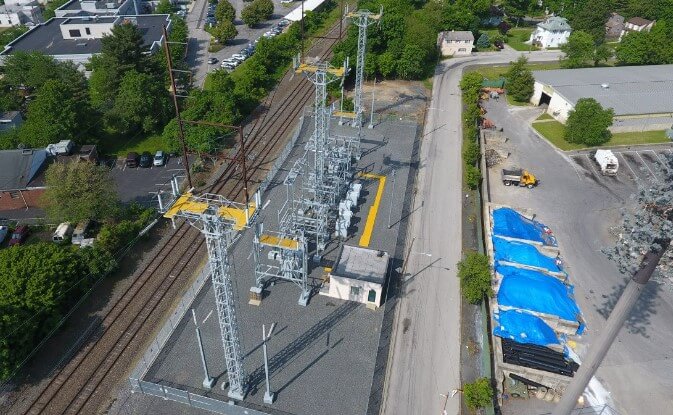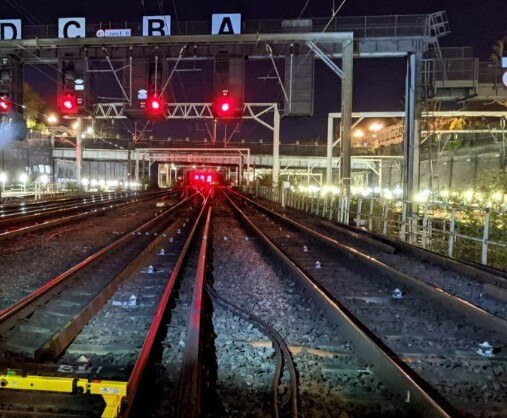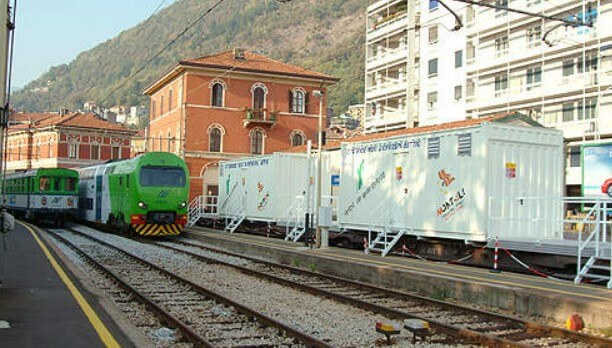Have you ever wondered about the electrical systems behind railway tracks and trains? One of the critical components is a traction substation. This electric substation converts electric power from the form provided by the electric utility company to an appropriate voltage, current, and frequency to supply railways and other electric traction systems. At the heart of a traction substation are three significant pieces of equipment: the traction transformer, circuit breakers, and an interrupter. Let's look at each of these components and their functions.
Traction Transformer:
One of the most critical components of a traction substation is the traction transformer. The purpose of this transformer is to step down the high supply voltage (usually around 132 to 220 kV) of the primary grid to a voltage of 25 kV, which is suitable for powering trains. To withstand the extreme operating conditions of the railway system, traction transformers are specially designed with class-A insulation and reinforced windings. These transformers are also built to have a large percentage impedance to limit the effect of short circuits. Generally, 8.5% is the minimum impedance for a 10 MVA transformer, while 10% is the norm for a 12.5 MVA transformer.

GET IN TOUCH
In a hurry? Call us at 276-285-3841
While on-load tap changers are unnecessary for traction transformers, they are provided with off-load tap changers at the high voltage side at intervals of -10%, -5%, 0%, and +10% of the rated voltage. This allows for voltage to be adjusted between 27.5 kV and 23.75 kV. This setup allows for more miniature switches and less copper tap wire and can be quickly cooled through oil immersion.
Typical traction transformers come with standard accessories such as a pause, oil level indicator, conservator tank, Buchholz relay, drain valve, dial gauge thermometer, vent pipe, and thermostats to monitor the oil temperature. Excellent oil is provided via radiators which can be removed for maintenance by closing the valves on the inlet and outlet pipes connecting them to the transformer tank.
Circuit Breakers:
Circuit breakers are a required component of any electrical substation. They are designed to automatically isolate a faulty section of the electrical network to prevent damage caused by overloads or short circuits. In a traction substation, circuit breakers play a crucial role in ensuring the reliability and safety of the system.
There are different types of circuit breakers used in traction substations, such as air blast circuit breakers and vacuum circuit breakers. Air blast circuit breakers use a high-pressure flow of air to quench the arc, while vacuum circuit breakers use a vacuum to achieve the same result. These circuit breakers are designed to handle the high current and voltage levels associated with traction systems.
Interrupter:
An interrupter is another critical component of a traction substation. Its primary function is interrupting the system's current flow in case of a fault. Interrupters are typically used to disconnect the power supply to a particular section of the track, allowing maintenance crews to work safely on the system.
Interrupters come in various designs, such as oil circuit breakers and sulfur hexafluoride (SF6) circuit breakers. Oil circuit breakers use oil as an arc quenching medium, while SF6 circuit breakers use sulfur hexafluoride gas. These interrupters are highly reliable and can interrupt large fault currents, ensuring the safety and efficiency of the traction substation.

GET IN TOUCH
In a hurry? Call us at 276-285-3841
Reliability and Safety Considerations:
Traction substations play a crucial role in the efficient and safe operation of railway systems. Reliability is of utmost importance to avoid disruptions in train services, which can lead to significant delays and inconvenience to passengers. Therefore, the traction substation equipment must be designed and maintained with a strong focus on reliability.
Regular maintenance and testing of the traction transformer, circuit breakers, and interrupter are essential to identify any potential issues before they lead to system failures. Maintenance crews must perform routine inspections, oil sampling, and condition monitoring to ensure the equipment's optimal performance.
Safety is another paramount concern in traction substations. Since these substations involve high voltage and current levels, adequate safety measures must be in place to protect the personnel working on the system. Training and safety protocols are crucial for maintenance crews to follow when working with the equipment.
Future Trends:
As technology advances, traction substations are expected to benefit from innovations in power electronics, automation, and communication systems. Power electronics devices, such as solid-state transformers and advanced voltage regulators, have the potential to enhance the efficiency and performance of traction substations.
In recent years, research and development efforts have focused on enhancing the intelligence and automation of traction substations. Smart grids and digital monitoring systems have been introduced to optimize power distribution and improve maintenance practices. Real-time data analytics enable predictive maintenance, helping to prevent equipment failures and reduce downtime.
Moreover, advancements in battery storage technology have led to investigations into the integration of energy storage systems with traction substations. Energy storage can help balance power supply and demand, support the integration of renewable energy sources, and provide backup power during emergencies.
As the global transportation sector seeks to modernize and become more sustainable, traction substations will continue to play a vital role in shaping the future of railways. Their ability to efficiently deliver electric power to trains, coupled with ongoing technological innovations, ensures that electrified railway systems remain a key component of modern and eco-friendly transportation networks.
Automation and remote monitoring technologies can improve the maintenance and operation of traction substations by enabling real-time data analysis and predictive maintenance. This can lead to reduced downtime and more proactive maintenance practices.
Furthermore, the integration of renewable energy sources into traction substations is gaining attention. Utilizing renewable energy to power trains can contribute to sustainability efforts and reduce the environmental impact of railway systems.

GET IN TOUCH
In a hurry? Call us at 276-285-3841
Conclusion:
Traction substations form the backbone of electrified railway systems, supplying reliable and efficient power to trains and electric traction systems. The traction transformer, circuit breakers, and interrupter are essential components that ensure the proper functioning of these substations. With a strong focus on reliability and safety, traction substations continue to evolve with technological advancements, promising a more sustainable and efficient future for railway transportation. For more information on the best traction substation equipment today, contact Swartz Engineering now.
Explore More of Our Products
Whether you need to upgrade your existing traction substation or require new installation, Swartz Engineering can help. Please find out more about our upgrade service or get in touch today.
For more information about these solutions and how Swartz Engineering can assist with your mining and electricity needs, click the links or check out the contact details at the bottom of the page.
Products We Offer
Swartz Engineering strives to provide top-quality products to achieve our customer's needs. Our products include:
- Type 76 DC Relay
- Type 82 DC Relay
- Swartz Engineering’s Type 64 Ground Relay
- Type 32 Reverse Current Relay
- Type 150 DC
- CSM Shield Monitor
- Metal Oxide Surge Arrestors
- Transducers
- MVIS SL Slim-line Contactor
- Fully-tested Power Control Rooms
- Swartz Engineering’s Portable Substations
For nearly half a century, we have proudly led the industry in ensuring safety and efficiency. Swartz Engineering is a trusted family-owned company dedicated to providing top-notch power distribution solutions for the electrical industry. Contact us today!
GET IN TOUCH
In a hurry? Call us at 276-285-3841
